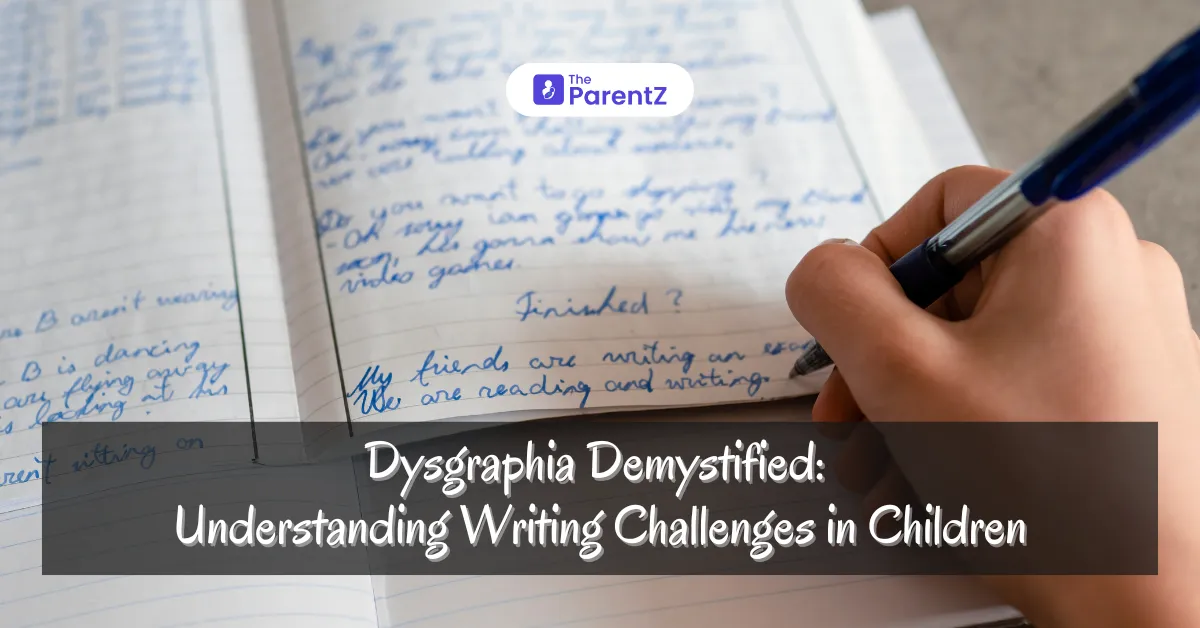What Is Dysgraphia?
Dysgraphia is a learning disability that affects a person’s ability to write. It impacts the fine motor skills needed for handwriting, typing, and organizing thoughts on paper. While dysgraphia does not indicate low intelligence, it can make tasks like writing assignments, taking notes, and even drawing challenging for children and adults alike.
This condition often manifests in early childhood, but its symptoms can persist into adulthood if not addressed. Dysgraphia can be frustrating for children as they struggle to keep up academically, potentially leading to anxiety or low self-esteem.
Signs and Symptoms of Dysgraphia
Parents and educators may notice the following in children with dysgraphia:
1. Handwriting Difficulties
• Illegible handwriting with uneven spacing and poor letter formation.
• Holding a pencil awkwardly or applying excessive pressure when writing.
2. Slow Writing Speed
• Difficulty completing assignments or tests on time due to slow writing.
3. Spelling and Grammar Errors
• Frequent spelling mistakes, even with simple words.
• Omitting words or letters when writing sentences.
4. Difficulty Organizing Ideas
• Struggles with planning and sequencing thoughts when writing paragraphs or essays.
5. Physical Discomfort
• Complaints of hand fatigue or pain while writing.
6. Emotional and Behavioral Signs
• Avoidance of writing tasks or frustration during writing-related activities.
Types of Dysgraphia
1. Motor Dysgraphia: Related to poor fine motor skills, leading to illegible handwriting and difficulty forming letters.
2. Spatial Dysgraphia: Difficulty with spatial awareness, resulting in issues like uneven spacing between words or letters.
3. Linguistic Dysgraphia: Challenges in spelling, grammar, and translating thoughts into written words.
4. Phonological Dysgraphia: Trouble sounding out words to spell them correctly.
What Causes Dysgraphia?
Dysgraphia is believed to stem from neurological differences that affect the brain’s ability to process language and motor control. Common causes include:
• Developmental Factors: Differences in the brain’s wiring for motor and language skills.
• Neurological Conditions: Associated with ADHD, Autism Spectrum Disorder (ASD), or other cognitive differences.
• Brain Injuries: In rare cases, trauma to the brain can lead to acquired dysgraphia.
The Impact of Dysgraphia on Mental Health
Children with dysgraphia often feel overwhelmed by writing tasks, leading to emotional struggles such as:
• Low Self-Esteem: Feeling “less capable” than peers.
• Anxiety: Stress over schoolwork or fear of embarrassment.
• Frustration: Frequent outbursts due to challenges with written assignments.
How Is Dysgraphia Diagnosed?
A proper diagnosis requires a team effort involving:
• Pediatricians: To rule out physical conditions like muscle weakness.
• Educational Psychologists: To assess learning and cognitive abilities.
• Occupational Therapists: To evaluate fine motor skills.
A comprehensive evaluation typically involves tests for handwriting, spelling, and motor skills, along with observations of the child’s behavior during writing tasks.
Tips for Supporting a Child with Dysgraphia
1. Use Assistive Tools
• Introduce technology like speech-to-text software or typing tools.
• Provide grip-friendly pencils or pens for better control.
2. Modify Assignments
• Allow oral responses or shorter written tasks.
• Avoid penalizing for handwriting or spelling errors.
3. Encourage Typing Skills
• Typing can be easier for children with dysgraphia, helping them focus on content over mechanics.
4. Seek Professional Help
• Occupational Therapy: Improves fine motor skills and handwriting techniques.
• Educational Support: Implementing Individualized Education Plans (IEPs) or 504 Plans in schools to accommodate learning needs.
5. Break Down Tasks
• Divide larger writing tasks into smaller, manageable steps.
6. Practice in a Low-Stress Environment
• Provide plenty of time and a quiet space for writing practice.
Research Insights on Dysgraphia
• Study by Berninger & May (2011) in Developmental Neuropsychology: Found that children with dysgraphia show significant improvements in handwriting and spelling with targeted interventions.
• Journal of Educational Psychology (2020): Highlights the benefits of multi-sensory teaching methods, such as using tactile exercises, for improving handwriting.
• American Occupational Therapy Association: Advocates for early detection and therapy, emphasizing that children with dysgraphia can excel with the right support.
Why Awareness Matters
Raising awareness about dysgraphia ensures that children receive early interventions, reducing academic stress and improving self-confidence. Parents play a pivotal role in recognizing symptoms and advocating for their child’s needs.
For more resources on learning disabilities and mental health, explore our related articles on parenting children with special abilities and mental health strategies for children.
Conclusion
Dysgraphia, though challenging, is manageable with early diagnosis and tailored interventions. By fostering a supportive environment and utilizing available resources, parents can help their children overcome writing difficulties and unlock their full potential.









Be the first one to comment on this story.